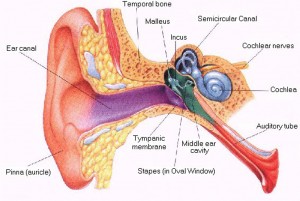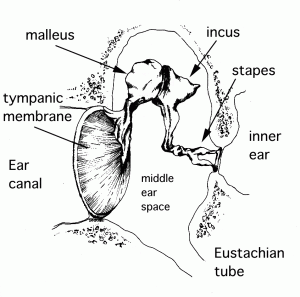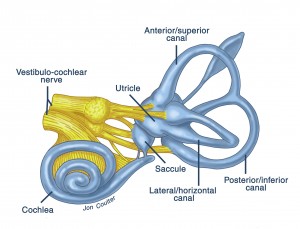Dizziness is a common complaint I hear from my patients. The term “dizzy” means a thousand different things to a thousand different people. Most commonly, “dizzy” means one of three things:
1. The sensation of spinning (medical term = vertigo)
2. Feeling off balance (medical term = dysequilibrium)
3. Feeling lightheaded
I will go into more detail on each one of these topics in the next few blog posts in this series.
Vertigo is usually caused by problems with the inner ears (“peripheral vertigo”) or problems with the brain (“central vertigo”). Inner ear causes of vertigo are the reason many patients are referred to see myself and other ENT doctors. However, I end up seeing a lot of patients with central vertigo and non-vertigo dizziness as well, so it is important that I know about these other problems and which are serious and might require referral to a neurologist or other specialist.
The most important part of my evaluation of a dizzy patient is the history. Most of the time, I can either make the diagnosis or at least rule out a serious problem just by talking with you.
My physical exam for dizzy patients consists of a comprehensive ear, nose, and throat exam as well as a partial neurologic exam. I will perform several maneuvers that test the function of the inner ear and look for specific problems that can cause vertigo. A hearing test is another important part of the evaluation of a dizzy patient. Inner ear problems can affect the hearing as well as the balance. Finally, I will sometimes order special testing such as balance testing (electronystagmogram) or imaging studies (CT or MRI) if it is necessary.
Dizziness can be a frustrating problem for myself as the doctor and for you as the patient. A lot of the time, no clear cause can be found. The silver lining is that while dizziness can be aggravating and frightening, it will usually go away with time and it is usually not caused by a serious underlying disorder.
In some of my future blog posts, I will go into more detail about the common types of dizziness.


